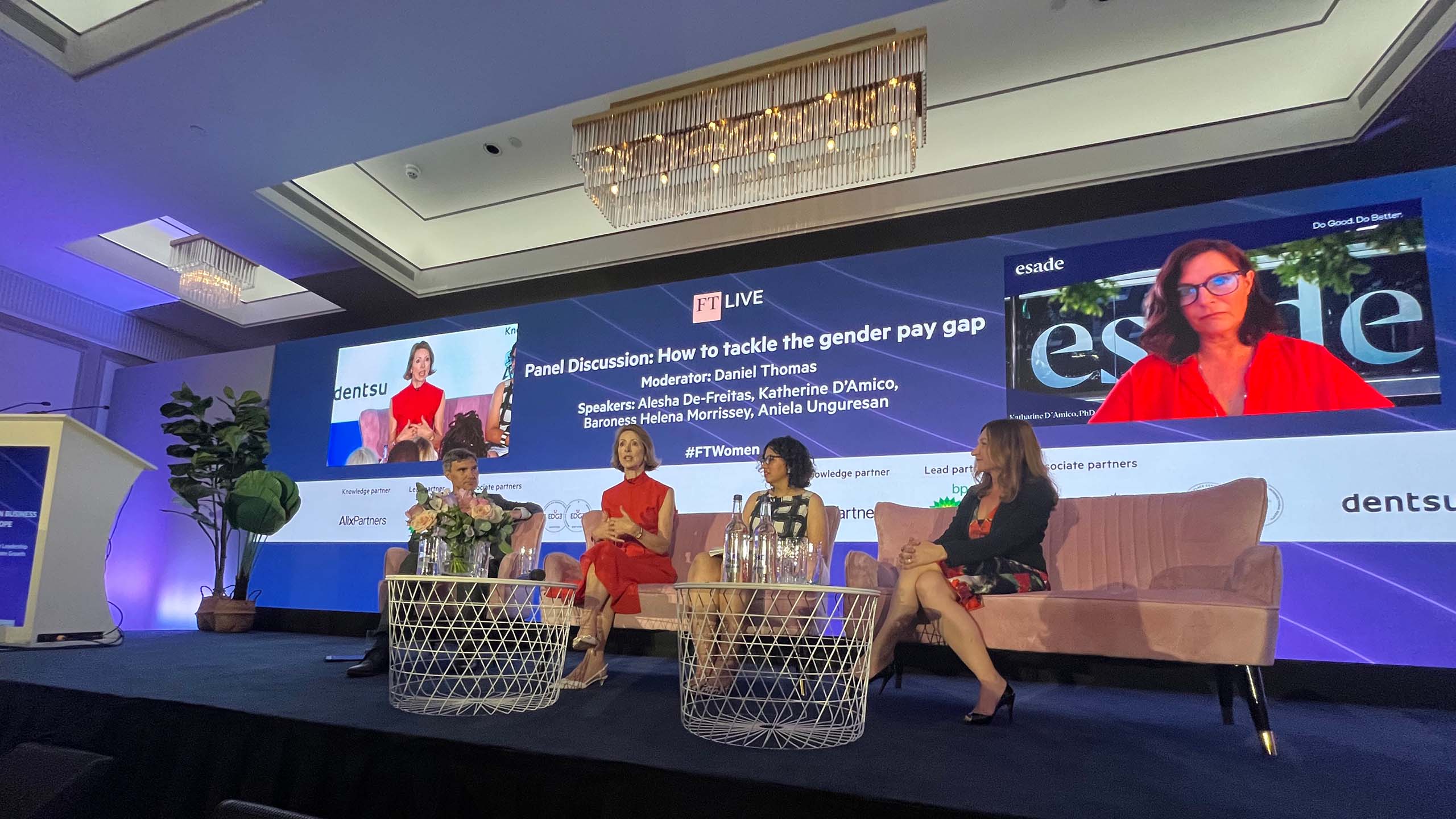
Author: Aniela Unguresan
Founder, EDGE
In this article, discover how organizations can combat sexual harassment and foster safer, more inclusive work environments by taking on impunity, banning silencing agreements, and championing gender diversity.
In September 2023, a research paper published in the British Journal of Surgery regarding female NHS surgeons revealed:
- 29.9% had been sexually assaulted
- 63.3% had been sexually harassed
- 89.5% had witnessed other staff being sexually harassed.
The reaction to these statistics was widespread shock and incomprehension. But should it be so surprising?
If workplaces are not effectively creating a culture of equality, transparency and accountability, and if they are not putting in place robust anti-harassment policies, then these are the consequences. We can’t simply hope that things change. Hope is not a strategy. We must actively drive change. We must be disruptive.
Clearly, there is work to be done regarding sexual harassment in the workplace. And we need commitment from organizations to analyse and address these challenges with rigour and discipline. To drive sustainable gender equality, reduce harassment and discrimination and ensure fair treatment for victims of harassment and assault, organizations should focus on three key areas:
1. The culture of impunity
A friend recently told me about someone he knows whose CEO was fired for sexual harassment. Everyone knew he had a reputation for “wandering hands”. He even had a nickname that reflected his reputation. And yet everyone within that organization felt that anything they said or did would be pointless; that he would get away with everything.
That is a culture of impunity. And it is sadly all too common.
Sexual harassment cases are very private. And this makes it difficult for organizations to analyse and correct the actions they took. When an employee violates an organization’s code of conduct and is fired, everybody knows why that person was fired (for example for fraud, violent conduct, etc.)
However, when somebody is fired for concerns related to sexual harassment, nobody knows about it unless they are a very public figure – that person simply disappears from one moment to another.
Overcoming this culture of impunity requires organizations to take a strong stance against harassment:
- To ensure that appropriate actions are taken regardless of the perpetrator’s status or achievements within the workplace
- To create a culture where victims are empowered to speak up without the fear of negative consequences or – as is often the case – complacency.
2. Silencing agreements and private arbitration
In the US, Congress passed a law in late 2022 to ban non-disclosure and non-disparagement agreements in cases of sexual harassment. Known as the Speak Out Act, the legislation is part of the government’s reaction to the MeToo movement, and it formally recognizes that silencing agreements feed into the culture of impunity.
However, many organizations assume that silencing agreements are illegal across the UK and Europe when they are not.
On 5 September 2023, the use of non-disclosure agreements in the workplace was debated in UK parliament. During the discussion, MP Peter Grant stated: “I do not think that I have ever seen agreement among so many speakers in a debate.
“[…] there was a time when NDAs were routinely abused between powerful men to cover up each other’s crimes and frauds. Most NDAs now are being used by powerful men to silence and victimize vulnerable women, and that is the abuse of the system that must be dealt with most urgently.”
While it is promising that governments are taking steps to improve the situation, organizations shouldn’t be waiting for silencing agreements to be illegal before restricting their use. Policies must move with the times and organizations must face the consequences if they don’t.
Zelda Perkins, former assistant to disgraced Hollywood producer Harvey Weinstein, summed this up neatly in her June 2023 Financial Times article: “[…] the wall of silence created by NDAs is beginning to crumble. People are speaking to the press out of desperation as businesses fail to deal with the problems. NDAs are now as likely to signpost issues as they are to protect reputations.”
And so, organizational policies must restrict the use of silencing agreements, except when requested by the victim, to ensure accountability and transparency in sexual harassment cases.
There is a similar issue around private arbitration.
Many employees are scared to publicly lose their claim – something many of them assume will happen due to the financial imbalance between them and the corporate defence. As a result, we have seen this emerging tendency of taking employment issues into the private sphere where accountability and transparency are constricted.
Silencing agreements and private arbitration can prevent victims from seeking justice and can contribute to a culture of secrecy around harassment cases. By proactively banning these, organizations can protect the rights of victims and promote a more open discussion of harassment issues.
3. Lack of equal representation and inclusive culture
Having equal representation and an inclusive culture is one of the most fundamental ways to uproot harassment and discrimination.
Not only can diverse boards consider a broader range of viewpoints when decision-making, but women in senior positions can also help ensure that perpetrators of sexual harassment in the workplace are not tolerated. A study from 2021 found that increasing the number of female directors by just a single individual can be directly linked to a 20% decrease (approx.) in sexual harassment.
Representation and inclusiveness of culture are two pillars of the EDGE Global Standards – the world’s leading global standards for Diversity, Equity and Inclusion (DE&I) that underpin EDGE Certification.
However, the focus on representation must not be at board level only. Gender diversity should be at all levels, throughout the talent pipeline. This is how power becomes effectively redistributed and can make a meaningful impact on workplace culture and reduce sexual harassment.
Drive meaningful change in your organization with EDGE Empower
DGE Empower is the leading software for workplace DE&I and the way to become eligible for EDGE Certification.
- Tackle issues like sexual harassment and gender inequity with precision
- Track and measure your journey towards a fairer workplace
- Build a robust DE&I and ESG reporting framework
- Gain credibility by demonstrating your commitment and progress through independent third-party certification.
Wherever you are on your DE&I journey, discover how EDGE Empower can help you apply the same rigour and discipline as you would to any other business-critical mission.
Book a demo
Wherever you are in your DE&I journey, whether at the very beginning or further along, EDGE Empower helps accelerate your progress, and through EDGE Certification visibly prove it – applying the same discipline and rigour that you would to other business-critical missions. Learn more by booking a demo, today.















